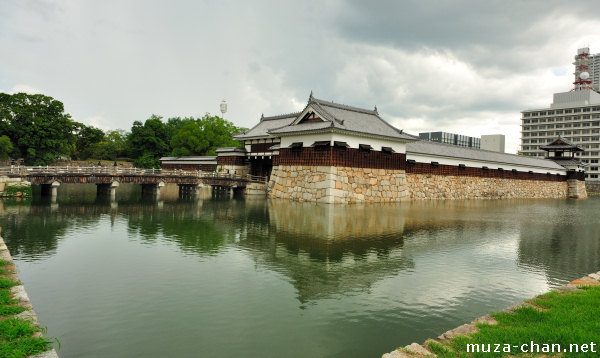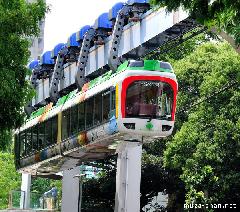Built on a plain, the Hiroshima Castle is a hirajiro (flatland) castle, using for defense rivers, swamps or specially made moats. During the Edo Period, the castle featured complex fortifications, including interior moats and three exterior, concentric moats, plus the nearby Hongawa river. However, during the Meiji and Showa periods, two exterior moats were filled in and the urban area started developing right over the castle’s former defenses.
Destroyed in 1945 by the atomic bombing, the main tower of the Hiroshima Castle (Tenshu), together with the inner moat and the main compound (Honmaru) were rebuilt in 1958, with the same exterior design but using concrete and modern construction techniques.
More recently, the second compound (Ninomaru) was also rebuilt, but this time from wood and using original construction methods - which makes it very interesting for history passionate tourists…
As I said, the two outermost moats are today occupied by modern buildings, but the first outer moat was refilled with water and today I would like to show it to you in this photo with the castle’s Ninomaru gate and tower (yagura), beautifully reflected in the moat’s water - I always take a picture like this when I visit a hirajiro type castle - I love the reflections…
EXIF Info:
|
Yesterday’s Japan Photo:The first zoo monorail in the world |



